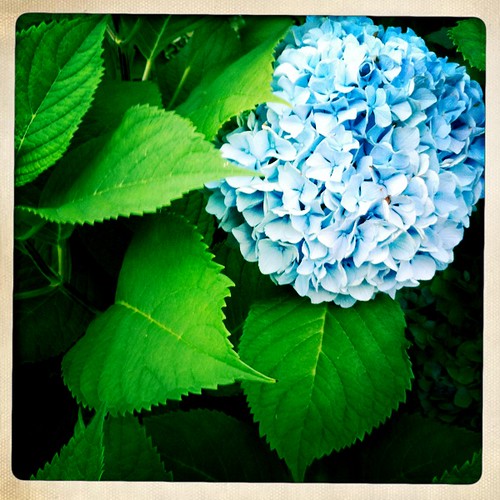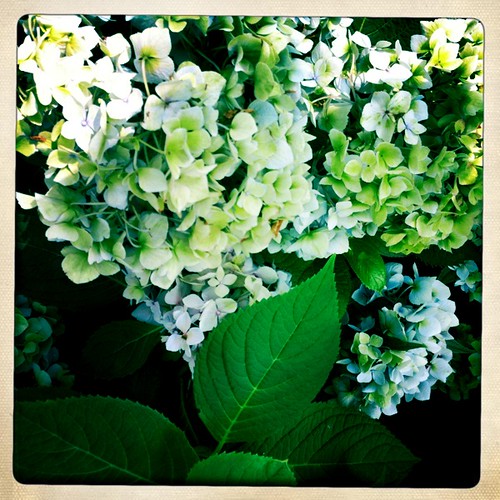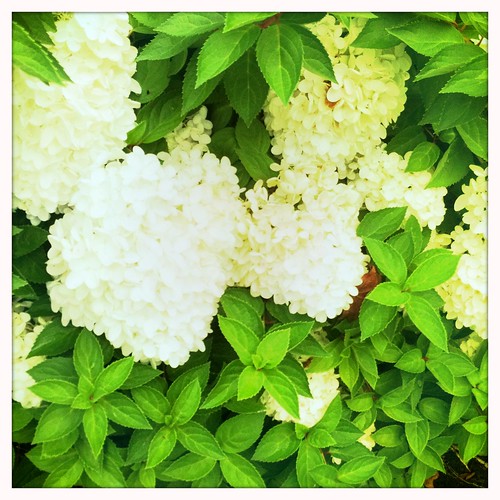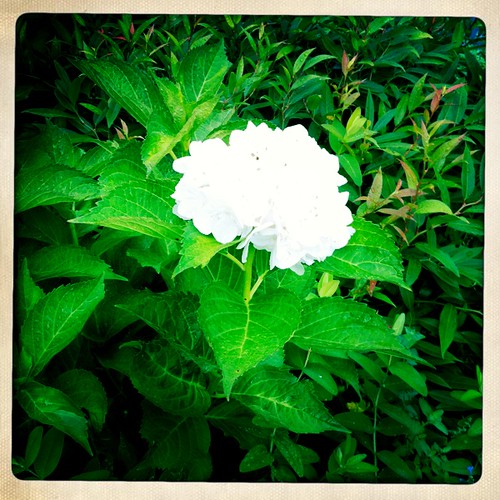But in the meantime, there are LOTS of hydrangeas here, in every color. So here are some purty pictures and a few maybe-new-to-you facts about these flowers...

While there are approximately 23 species of Hydrangea, only five are widely cultivated in the U.S. The most popular species is Hydrangea macrophylla, which is commonly known as bigleaf, French, garden or florist’s hydrangea. This Japanese native is rated as hardy to USDA cold-hardiness zone 6. It produces large inflorescences of white, pink or blue flowers in early summer.

Hydrangeas grow best in moist, well-drained soil. Most hydrangeas benefit from some shade, especially in hot climates. Bigleaf, oakleaf and smooth hydrangeas will usually perform well on the north side of a house or planted at the edge of a woodland (see image at right). As discussed earlier, growing hydrangeas in deep shade is not necessary and can greatly reduce flowering.
The amount of sun that hydrangeas can tolerate depends on species, climate and availability of water.

Flower color in H. macrophylla is dependent on cultivar and aluminum availability. Aluminum is necessary to produce the blue pigment for which bigleaf hydrangea is noted. Most garden soils have adequate aluminum, but the aluminum will not be available to the plant if the soil pH is high. For most bigleaf hydrangea cultivars, blue flowers will be produced in acidic soil (pH 5.5 and lower), whereas neutral to alkaline soils (pH 6.5 and higher) will usually produce pink flowers. Between pH 5.5 and pH 6.5, the flowers will be purple (see image at left) or a mixture of blue and pink flowers will be found on the same plant.

Hydrangeas are moderately toxic if eaten, with all parts of the plant containing cyanogenic glycosides. Hydrangea paniculata is reportedly sometimes smoked as an intoxicant, despite the danger of illness and/or death due to the cyanide.

Sources:
http://www.usna.usda.gov/Gardens/faqs/hydrangeafaq2.html
http://en.wikipedia.org/wiki/Hydrangea
No comments:
Post a Comment